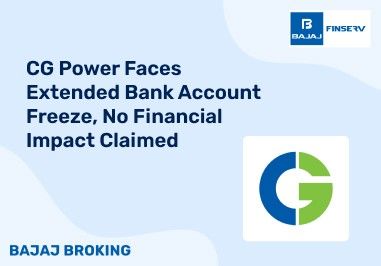The interest coverage ratio (ICR) is one of the most important financial metrics that helps us understand whether a company is able to pay interest on its debt obligations or not.
When a company raises funds through debt, it has to mandatorily pay interest on it. If it fails to do so, its lenders can initiate legal proceedings against the company. Besides, failure to pay interest makes it extremely difficult for a company to raise debt in the future.
Hence, ICR is an important financial indicator to be considered while analysing a company.
Understanding Interest Coverage Ratio
Ideally speaking, all companies should be able to comfortably pay interest on their debt. Hence, they should have an adequate interest coverage ratio. However, when a company does not have an adequate ICR, should it be an alarming sign?
It depends upon the context. Let us say that a company was under stress due to an event, which is not likely to get repeated. Moreover, while its interest coverage ratio has decreased, it still has enough cash to pay interest. Hence, in this case, it is not a cause for an alarm.
But, if a company does not have sufficient cash to pay interest, it should alarm you. While examining a company’s ICR, you must compare its performance on this ratio with that of its closest competitors. That will help you put its performance in perspective.
Besides, what a good ICR is in one industry may not be good in another. So, it varies from industry to industry.
Calculating the Interest Coverage Ratio
There are a few ways to calculate the interest coverage ratio. So, let us first discuss the most popular formula to calculate the ratio.
Interest Coverage Ratio = Earnings Before Interest and Tax / Interest Expense
In the numerator of this formula, we have a company’s earnings before interest and tax (EBIT). In the denominator, we have its interest expense, which is the interest it has to pay on any kind of debt. Both the numbers can be easily obtained from a company’s profit and loss account to calculate the ratio.
Different types of Interest Coverage Ratio
There are different ways to calculate the interest coverage ratio. An expert picks a formula based on the objective of his analysis.
EBITDA Interest Coverage Ratio: In this type, we consider a company’s EBITDA (earnings before interest, tax, depreciation, and amortization) in the numerator. So, we add depreciation and amortization to EBIT to calculate EBITDA, which shows a company’s operational cash flow.
Formula: EBITDA / Interest Expense
Fixed Charge Coverage Ratio (FCCR): This ratio tells us about a company’s ability to pay its fixed charges, including interest payments, lease payments, and other fixed charges. It provides a broad view of a company’s ability to pay its fixed obligations.
Formula: (EBIT + Fixed Charges) / (Fixed Charges + Interest Expenses)
EBITDA Less Capex Interest Coverage Ratio: This variation measures how well a company can pay its interest expense from its cash flow from operations after paying for its capital expenditure.
Formula: (EBITDA – Capital Expenditure) / (Interest Expense)
EBIAT Interest Coverage Ratio: This ratio tells us how well a company can pay its interest expense from its post-tax earnings.
Formula: (Earnings Before Interest and After Taxes) / (Interest Expense)
How to Interpret the Interest Coverage Ratio
The following table can help you interpret the interest coverage ratio:
Interest Coverage Ratio
| How to Interpret?
|
1 or less
| If a company’s ICR is 1, it means its EBIT is equal to its interest expense. If its ICR is less than 1, it means its EBIT is lower than its interest expense. In such a situation, it may find it difficult to pay its interest expense and could default.
|
1.5 to 2
| This shows that a company’s operational profit is 1.5 to 2 times its interest expense. Hence, it can easily pay its interest expense.
|
More than 2
| It shows that a firm’s operational profit is more than twice its interest expense. So, rest assured that it can definitely pay its interest expense.
|
Why Does Interest Coverage Ratio Matter to Various Stakeholders?
A firm’s interest coverage ratio is an important metric for all its stakeholders, particularly for its creditors and investors for the reasons explained below.
Importance for Creditors: A firm’s creditors check its interest coverage ratio to analyse whether they should lend to it and if yes at what terms and interest rate. If a company is struggling to pay its interest expense and has a low ICR, its creditors may not extend it credit. Conversely, if it can pay its interest expense easily, its creditors can provide it with finance at an affordable interest rate.
Importance for Investors: The interest coverage ratio tells an investor whether a firm is being managed in a sustainable manner or not. If a company is not able to pay its interest expense, its lenders can take it to court and it may face bankruptcy, which will certainly not be favourable for its investors.
Limitations of the Interest Coverage Ratio Metric
While ICR is an important financial indicator, you need to understand its limitations, which are explained below:
Difficult Comparability Across Industries: It is extremely difficult to compare ICR in one industry with that of another. For example, an industry which is not debt heavy will have low interest expense and high ICR. On the other hand, an industry which needs debt may have high interest expense and low ICR.
No Outlook on Debt Repayment: The interest coverage ratio does not tell us how comfortably a company can pay its debt because it only considers the interest expense.
EBIT Fluctuations: If a company’s EBIT fluctuates wildly for any reason, it may become difficult to interpret its interest coverage ratio because it will vary significantly from one period to another.
Complex Capital Structures: When a company has a complex capital structure due to convertible debt or any off-balance-sheet item, the interest coverage ratio may not be able to show its financial health.
Key Takeaways: Evaluating Interest Coverage Ratio More Effectively
To assess a company’s ICR effectively, you must consider the following points:
You need to consider all types of interest expense and debt obligations of a company to calculate its ICR.
For comparison, you should select companies from the same industry. This is because the acceptable range of ICR varies from one sector to another.
You should not analyse a company’s ICR for a period in isolation. Instead, you must assess how its ICR has performed over a number of years.
You should use ICR in conjunction with other financial indicators to form a holistic view of a company’s performance. If you use it alone, you may get misleading signs.
Conclusion
The interest coverage ratio is an essential financial indicator whether you have just begun trading by opening a demat account or are a seasoned trader. That said, it is equally important to understand a business and its industry while analysing its ICR. Hence, it is important to improve your awareness about how a sector functions because that will help you analyse its ICR better.









_slider.jpg)



